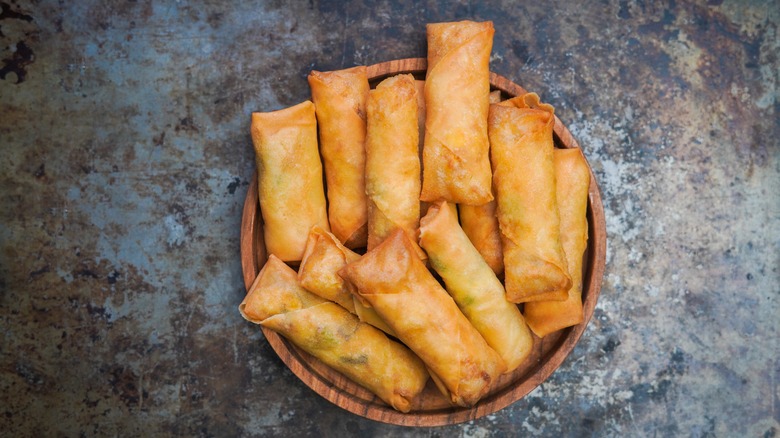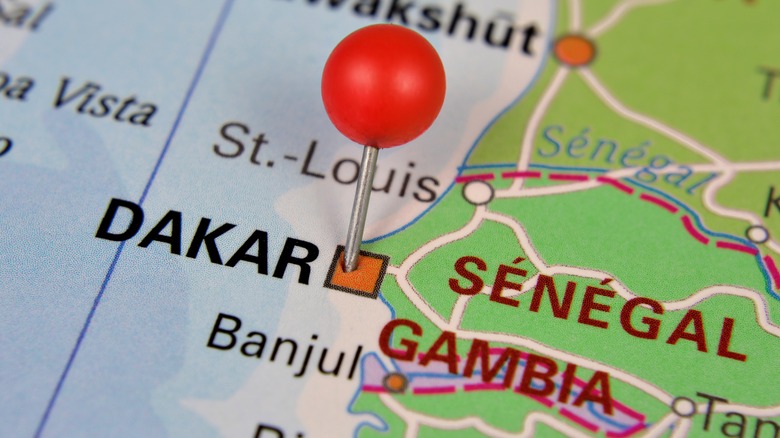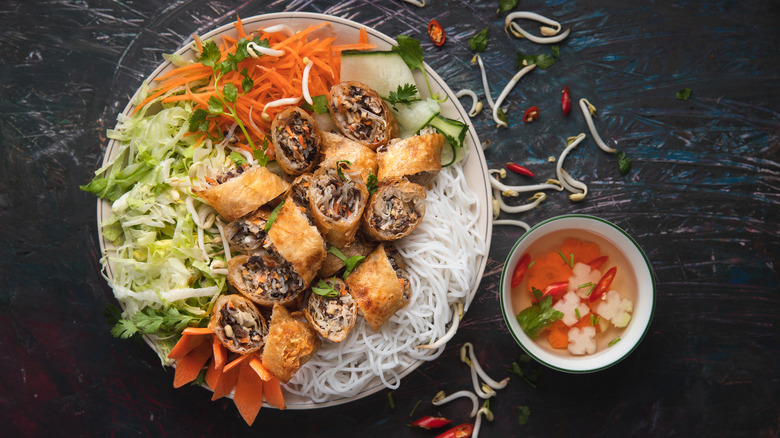Nem: The Senegalese Spring Rolls Brought About By War
No one can deny that immigrants have a massive cultural impact on the places they choose to adopt as their new home. This is especially true when it comes to food. Would modern Manhattan be the same without Little Italy or San Francisco without Chinatown? Of course not. Immigrants from across the globe have helped transform the United States into what Forbes calls "the richest cornucopia of food of any country on earth." Yet, we do not hold a monopoly on immigrant-impacted food scenes.
In Dakar, the capital of the western African nation of Senegal, there is a popular street food that is decidedly not of African origin. According to Atlas Obscura, the crispy Vietnamese spring rolls known as nem are a favorite street food among the citizens of Dakar. How exactly did these noodle-filled rolls make it all the way from Southeast Asia to West Africa? The journey begins with one of the great conflicts of the 20th century: The Vietnam War.
Senegal comes to Vietnam
It is often easy to forget that the Vietnam War began without direct American involvement. According to History.com, the roots of the conflict lay with the Colonial French Empire, which had maintained control in what they called "Indochina" — modern-day Vietnam, Cambodia, and Laos — since the late 19th century. Tensions came to a head between the French colonialists and the Viet Minh. This force of communist liberators under the leadership of Ho Chi Minh roundly whipped the French and their allies at the decisive battle of Dien Bien Phu, after which the Geneva Accords were signed and adopted, and Vietnam was split north/south along the 17th parallel.
The French military had brought with them to Indochina battalions of riflemen called "tirailleurs sénégalais" (Senegalese riflemen). As Britannica tells us, Senegal had also come under French control in the late 19th century. Many of the Senegalese riflemen stationed in Indochina had married native Vietnamese women and would bring them back to Africa after French colonial rule ended in 1954.
Vietnam comes to Senegal
In an article written for Slate, Nellie Peyton describes the hardships the returning mixed Senegal/Vietnam families faced: "Their families were large, and a soldier's wages under French rule were not. The women had to use what skills they had to make a living, and many did what they knew best. They set up stands in the pungent, crowded downtown food market, the marché Kermel, and they cooked." One thing they cooked, and cook well, was nem.
The family children were not excluded from the cooking — quite the opposite. Jean Gomis, also featured in Peyton's article, remembers that all the kids with Vietnamese mothers would help cook and, by extension, learn how to cook. Gomis, himself the son of a Senegalese/Vietnamese pairing, was taught the make nem the "proper way" by his mother. His restaurant, Saveurs d'Asie, is one of the few remaining places in Dakar where you can get properly prepared nem.
How nem is made, properly
As Atlas Obscura states, nem is a crispy spring roll filled with a combination of glass noodles, herbs, and ground meat or shrimp. However, as the direct descendants of the Vietnamese immigrants who introduced Senegal to nem began to pass away, so did the secrets and techniques of preparation. As a result, lesser iterations have become standard fare.
However, there are still those who can prepare a proper Dakar nem. Jean Gomis is one of them. Again quoting from Slate, Gomis was taught to make nem properly by his mother. He was taught how to moisten the rice wrapping paper just enough, to wrap the filling tight, and fry them in oil that was "not too hot, not too cold." It was also important that the rolls not touch so that each one would come out individually crispy and fully cooked. Nem will outlive Gomis, though something will undoubtedly be lost when there is no one left in Dakar with direct knowledge of the past of this famous little street food.



